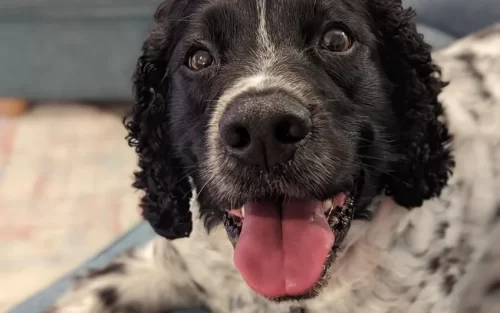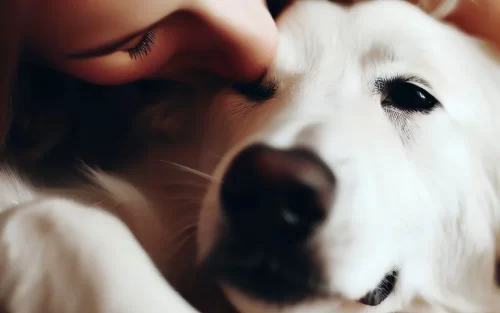Air travel can be a daunting experience, especially if you are bringing your furry friend along. Whether you are relocating, going on vacation, or visiting family, you want to ensure that your dog is comfortable and safe during the flight. With proper preparation and planning, air travel can be a breeze for you and your pet.
There are several factors to consider before taking your dog on a flight, including the airline’s policies and requirements, the type of carrier or crate you will need, and your dog’s health and behavior. Each of these factors requires careful attention and preparation to ensure that your dog has a stress-free and safe travel experience.
Before booking your flight, research the airline’s policies and requirements for pet travel. Some airlines do not allow pets at all, while others may have restrictions on the size, weight, breed, or number of pets you can bring. You will also need to find out what documentation is required, such as health certificates, vaccination records, or microchip information. Some airlines may require you to reserve a spot for your pet in advance and pay an extra fee.
Choosing the right carrier or crate for your dog is also essential. Depending on the size of your dog and the airline’s policies, you may have the option of bringing your dog in the cabin with you or checking them in as cargo. You need to have a carrier or crate that meets the airline’s specifications, provides enough space and ventilation for your dog, and is secure and leak-proof. You should also line the bottom with absorbent material and include some familiar items like a blanket or a toy to make your dog feel more comfortable.
With proper preparation and planning, air travel with your dog can be a safe and enjoyable experience. In this article, we will provide you with some tips on how to prepare your dog for air travel and what to expect from the experience.
Check the Airline’s Policies and Requirements
Different airlines have different rules and regulations regarding pet travel, so you need to do your research before booking your flight. Some airlines may not allow pets at all, while others may have restrictions on the size, weight, breed, or number of pets you can bring. You also need to find out what kind of documentation you need to provide, such as health certificates, vaccination records, or microchip information.
Some airlines may require you to reserve a spot for your pet in advance and pay an extra fee. You should also check the policies of your destination country, as some may have quarantine or import regulations for pets.
Choose the Right Carrier or Crate for Air Travel
Depending on the size of your dog and the airline’s policies, you may have the option of bringing your dog in the cabin with you or checking them in as cargo. Either way, you need to have a suitable carrier or crate that meets the airline’s specifications and provides enough space and ventilation for your dog. The carrier or crate should be sturdy, secure, leak-proof, and labeled with your contact information and a “Live Animal” sticker.
You should also line the bottom with absorbent material and include some familiar items like a blanket or a toy to make your dog feel more comfortable.
Prepare Your Dog for the Carrier or Crate
If your dog is not used to being in a carrier or crate, you should start training them well in advance of your trip. You can use positive reinforcement techniques like treats and praise to make the carrier or crate a pleasant place for your dog. You can also gradually increase the duration and frequency of putting your dog in the carrier or crate until they are comfortable staying in it for several hours.
You should also practice carrying or moving the carrier or crate with your dog inside to get them used to the motion and noise.
Visit Your Veterinarian Before the Trip
It is important to make sure your dog is healthy and up-to-date on their vaccinations before traveling by air. You should visit your veterinarian at least 10 days before your departure date and get a health certificate that states that your dog is fit to fly. You should also ask your veterinarian about any medications or supplements that your dog may need during the trip, such as anti-nausea pills, sedatives, or calming aids.
However, you should avoid giving your dog any medication without consulting your veterinarian first, as some drugs may have adverse effects on your dog’s health or behavior.
Feed And Exercise Your Dog Before the Flight
You should feed your dog a light meal about four hours before the flight and avoid giving them any food or water within two hours of departure. This will help prevent them from getting sick or having accidents during the flight. You should also give your dog plenty of exercise and stimulation before the flight to tire them out and reduce their stress levels.
You can take them for a long walk, play fetch, or do some obedience training. You should also let them relieve themselves before checking in at the airport.
Keep Calm and Follow the Instructions At The Airport
When you arrive at the airport, you should check in with the airline staff and follow their instructions on how to handle your dog. You may have to weigh your dog and their carrier or crate, fill out some forms, pay some fees, or go through security screening.
You should always keep calm and positive around your dog, as they can sense your emotions and react accordingly. You should also avoid making a fuss over your dog or saying goodbye too dramatically, as this may make them more anxious.
Monitor Your Dog During Air Travel
If you are traveling with your dog in the cabin, you should keep them under the seat in front of you and avoid opening their carrier or crate during the flight. You should also check on them periodically and reassure them with your voice or touch.
If you are traveling with your dog as cargo, you should trust that they are in good hands and try not to worry too much. You can also ask the flight attendants if they can give you any updates on how your dog is doing.
Reunite With Your Dog After Landing
When you reach your destination, you should collect your dog as soon as possible from the baggage claim area or the cargo terminal. You should check their condition and behavior and give them some time to adjust to the new surroundings. You should also offer them some water and a small meal, as they may be hungry or thirsty after the flight.
If your dog shows any signs of illness or distress, you should seek veterinary attention immediately. You should also make sure to follow the local regulations and customs regarding pet transport and quarantine if applicable.
How to Prepare Your Dog For Air Travel – Conclusion
Traveling with your dog can be a wonderful experience if you take the time to prepare them properly. By following these tips on how to prepare your dog for air travel, you can ensure that your furry friend will be comfortable, safe, and happy throughout the journey. Remember to check the airline’s policies and requirements, choose the right carrier or crate, prepare your dog for the carrier or crate, visit your veterinarian before the trip, feed and exercise your dog before the flight, keep calm and follow the instructions at the airport, monitor your dog during the flight, and reunite with your dog after landing.
It is also important to keep in mind that air travel is not the only option for traveling with your dog. If your dog is not comfortable flying, you can consider other modes of transportation like road trips, train rides, or boat cruises. These options may take longer and require more planning, but they can also offer more flexibility, freedom, and bonding opportunities for you and your dog.
Whatever mode of transportation you choose, always remember to prioritize your dog’s well-being and happiness. Your dog is not just a pet, but a member of your family, and they deserve the same love, care, and respect as any human being. By treating your dog with kindness, patience, and understanding, you can create a strong and lasting bond that will enrich your life and theirs for many years to come. So go ahead and plan your next adventure with your furry friend, and enjoy the journey together!



